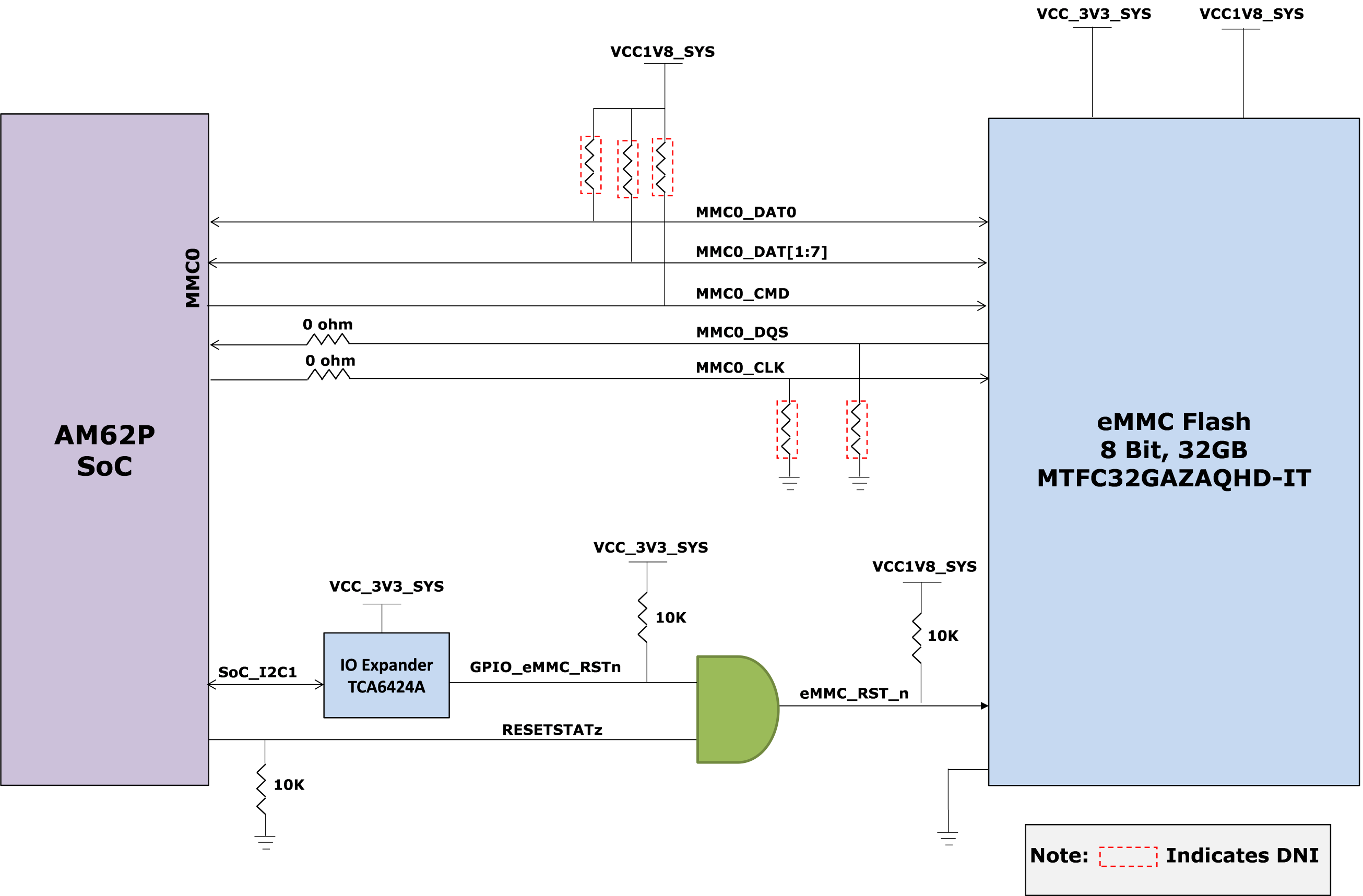SPRUJA2 November 2023
- 1
- Description
- Get Started
- Features
- 5
- 1Evaluation Module Overview
-
2Hardware
- 2.1 Additional Images
- 2.2 Key Features
- 2.3 Interface Mapping
- 2.4 Power ON/OFF Procedure
- 2.5 Clocking
- 2.6 Reset
- 2.7 CSI Interface
- 2.8 OLDI Interface
- 2.9 DSI Interface
- 2.10 Audio Codec Interface
- 2.11 HDMI Display Interface
- 2.12 JTAG Interface
- 2.13 Test Automation Header
- 2.14 UART Interface
- 2.15 USB Interface
- 2.16 Memory Interfaces
- 2.17 Ethernet Interface
- 2.18 GPIO Port Expander
- 2.19 GPIO Mapping
- 2.20 Power
- 2.21 EVM User Setup/Configuration
- 2.22 Expansion Headers
- 2.23 Interrupt
- 2.24 I2C Address Mapping
- 3Hardware Design Files
- 4Compliance Information
- 5Additional Information
2.16.3.1 MMC0 - eMMC Interface
The SK EVM board contains 32GB of eMMC flash memory from Micron Part# MTFC32GAZAQHD-IT connected to the MMC0 port of AM62P SOC.
The data bus from the flash memory is connected to the 8 data bits of the MMC0 interface supporting HS400 double data rates up to 200 MHz. The Micron eMMC is a communication and mass data storage device that includes a Multimedia Card (MMC) interface and a NAND Flash component. Option to mount external pull up resistors are provided on DAT[7:1] to prevent bus floating and series resistor is provided for CLK signal close to SOC pad to match the characteristic impedance.
The eMMC device requires two power supplies, 3.3V for NAND memory and 1.8V for the eMMC interface. The MMC0 I/O’s of the SOC are powered by VDDS_MMC0 supplied from an fixed 1.8V supply.
eMMC device requires active low reset from host. By default, the RST_n signal is temporarily disabled in the device. The host must set ECSD register byte 162, bits[1:0] to 0x1 to enable this functionality before the host can use. The External Reset is provided by ANDing RESETSTATz from SOC and a GPIO from IO Expander. A pull up is provided on GPIO pin to set the default active state.
 Figure 2-19 eMMC Interface
Figure 2-19 eMMC Interface